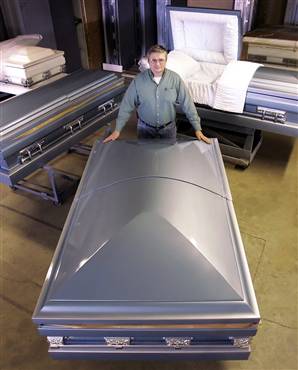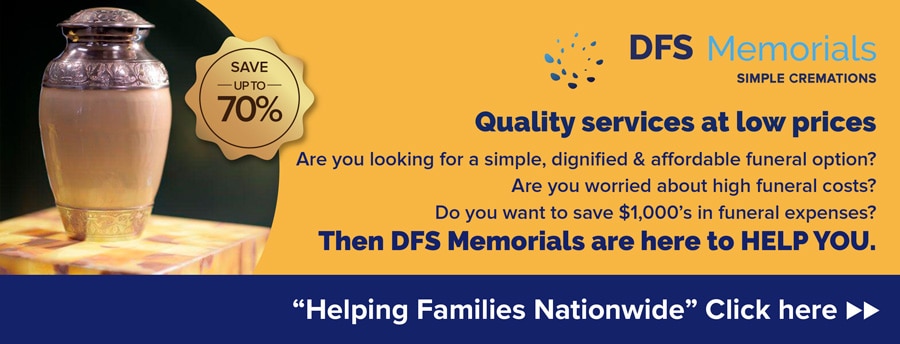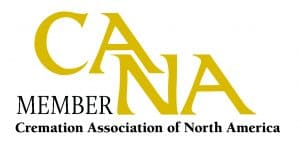
Obesity has become a significant concern of modern society, and the effects of obesity are already impacting our healthcare industries in the United States.
But how is the growing obesity rate impacting the deathcare industry?
What does it mean if you are fat and need a funeral? How do funeral directors have to change practices to accommodate the growing number of obese corpses?
Needless to say, it means a greater cost to arrange a funeral for a ‘larger than average’ size person.
I use the term “average” loosely these days, as to how we define an average-size person has to be redefined when over one-third (*41.9%) of Americans are categorized as “clinically obese.”
When we add to this the growing childhood obesity rates, with just over 12.5 million young people aged 2–19 years already classified as obese, we are at an epoch when “average” size is no longer the standard it once was.
Government watchdogs forecast that by 2030 at least 50% of the U.S. population will be obese.
Apart from the obvious implication, which is that obesity can result in an earlier death, the costs of arranging a funeral for an obese person can far exceed the cost of an average funeral. Why is this?
The funeral director will wish to ensure that he can still deliver dignified and equitable professional services for an overweight client who has deceased. In order to ensure that this can be delivered, certain factors have to be taken into account.
Requiring an XL-size Casket or Cremation Container
Most caskets are generally a standard size and cannot accommodate a person who is significantly overweight. Therefore, an “oversize” casket is required. The standard-size casket has already increased from 24 inches to 27 inches.
Oversize caskets not only require more materials but are currently still something of a specialist product and are often made only custom-made on request. Ergo – they cost more!
Casket companies such as Goliath Caskets have emerged to cater to this market and build caskets up to 52 inches wide that can hold a person between 800 and 1000 lbs. You can expect to pay anything up from $2,500 to purchase an oversize casket.
Even if a casket is not required as the deceased is to be cremated, the cremation container will need to be a larger size and reinforced to support the increased load.
What About Grave Plot Sizing?
Obviously, a wider casket means that you require a larger grave plot. And if required, a larger vault liner.
Generally, single plots in a cemetery are 3 feet wide by 8 feet in length.
Some cemeteries are adapting by offering larger single plots that are 4 feet wide by 10 feet long, but these are not always available. Some cemeteries will require two co-joined single plots may be required to accommodate an oversize casket.
Where a person has pre-purchased a cemetery plot but cannot then fit into it, this can cause all sorts of complications and often result in the family having to purchase a new plot and try and re-sell the existing plot.

Many of the DFS Memorials cremation service providers offer affordable barometric cremation services, as they invested in cremation equipment and the changing trend ahead of many other funeral homes.
DFS Memorials offer standard direct cremation services from $795 (depending on location) with an additional barometric charge of between $150 – $250.
Visit DFS Memorials and select your State and City to find a location near you and their direct cremation service package price.
Funeral Transportation – Moving a 250+ pound body
A larger and heavier casket will also require consideration for transportation. Many hearse manufacturers now have to consider offering a hearse in their range that is wider with a larger rear door and a reinforced chassis.
If a funeral home does not have a suitable vehicle, other options for transportation may have to be considered. A funeral director may have to contract in additional transportation provisions at an incremental cost. In some cases, alternative transportation, such as a horse and carriage, can be employed to transport an oversize casket.
Fortunately, more funeral homes are using different transport vehicles these days in addition to the standard hearse automobile. More funeral homes that offer cremation services have added refrigerated vans to their fleet, and these have helped with the transport of larger bodies.
Lifting Equipment – How do You Move an Obese Corpse?
As we all know, moving a large inanimate object is extremely difficult! Traditionally most funeral homes move the deceased around by simply using manpower and employing basic lifting and moving techniques.
A traditional funeral that requires pallbearers to carry the casket cannot be facilitated so easily if the deceased is overweight, as there are risks to consider for the staff carrying the casket, who could be liable to back injuries.
Today many funeral homes have begun to employ more sophisticated lifting, winching, and trolley equipment to assist in the movement of corpses and caskets. In the case of an oversize corpse, it is likely that either more staff or more equipment will be required, and of course, this will ordinarily incur additional costs.
We are so conscious about health and safety in our ‘blame and claim’ culture that I should imagine more stringent insurance policies and body-handling procedures will have to come into play as funeral homes have to handle the increasing number of overweight bodies.
Crematory Equipment – Performing a Barometric Cremation
Most crematories are designed to handle a standard-size body. When dealing with overweight corpses, many issues arise. Firstly the door and chamber size may not be wide enough to accommodate the additional size. Secondly, the extra fat in the body requires a higher temperature and a longer and more monitored process to complete the cremation process, so more powerful burners are required, and more energy and gas are consumed.
Once the fat in an obese corpse is ignited, it can burn excessively, and the cremation retort may need to be turned off intermittently to prevent overheating or extreme combustion.
All leading, of course, to an increased cost. Many funeral businesses and crematoriums are opting to upgrade their crematory to be able to cope with this rise in size. However, if you find that is not an option with your local funeral director, then you may have to incur additional costs to transport the body to a facility that can offer this.
All in all, you can expect a ‘supersize’ funeral to cost anything between $800 and $3,000 more than a standard funeral, something many families have not planned for or even considered until faced with the task of arranging the funeral.
To understand more about cremation services for the overweight or obese – Check out this article Can An Obese Person be Cremated?
Is the Funeral Industry Prepared for the Rise in Corpse Size?
Some industry critics say that the funeral industry has not yet adapted to prepare for this cultural shift. Many in the industry claim that given the current economic climate, and the price competition brought about by firms offering budget cremations, it is difficult for them to invest in upgrading their equipment without incurring increased operational costs.
What some consumers have found is that if you have to arrange a funeral for a loved one who was overweight, it is best to compare prices between funeral homes. A number of funeral homes have had experience in handling ‘supersize’ funerals and, therefore, already have strategies and resources in place, thereby reducing the overall incremental costs.
For example, a family in Ohio recently found that the first funeral home they approached to handle the funeral of their deceased father, who weighed 696 lbs, was quoted the price of $20,000 due to additional charges for a custom-made casket, burial vault, and the need for two burial plots. However, by telephoning around, they found a funeral home that could do the funeral for them for $7,922 due to the fact that they already stocked a large-size casket and negotiated with the cemetery to fit the casket into a single plot.
America is on a ‘supersize’ trajectory, and those funeral businesses that adapt to meet this demand could certainly be gaining themselves a competitive market edge. For those funeral homes and consumers who have not yet considered the implications of a ‘supersize’ funeral–now could be a good time to start adapting or making plans.
* State of Obesity report – Trust For America’s Health

